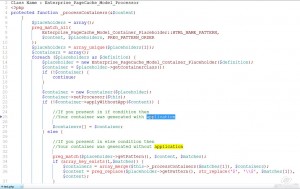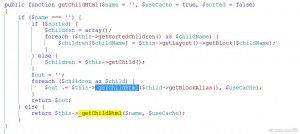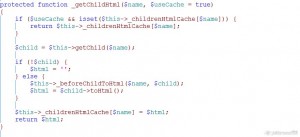Additional Tips:
1] Don’t use CMS block
It takes more time than Magento block.
2]If possible, Use FPC
Q. What is a FPC(Fullpagecache)?
A. Full Page Cache is a very important technique which allows us copy content from web by storing the data to a temporary container to help reduce memory.
Q. Which pages are cached by Full Page Cache?
A. There are three types of pages which can be cached by Full Page Cache.
Category View pages
Product View Pages
CMS Pages“By using Full page cache, improve your Magento performance, optimization, and page speeds. “
3] Remove unwanted blocks. (Number of blocks are executed that are not used or displayed)
b) Unwanted code is executed and decrease the speed of magento website. Hence remove unwanted blocks from specific page.
Q. How to remove block from specific handle through xml file?
A.
<–product compare–>
“
4] Use of FPC
If using FPC make sure your containers are cached and repeat request for container is delivered via cache. Improper placeholder definition results in container cache not being used but each time new container content getting generated.
Magento Enterprise consists of number of useful numbers of features. In which, one is very important it may increase your store performance. It is a full page cache. It present in Magento Admin
System → Configuration → Cache Management
Full Page Cache is more useful mechanism that permits copy data by storing the page content to a temporary container to help reduce memory and database load.
Full page cahe is a way for Magento to load content for a user without having to fully initialize the application.
Make sure your containers are cached if we using Full Page Cache and check repeat request for container is delivered via cache. Containers create from placeholders.
Hence, incorrect placeholder results in container cache not used but each time new container content getting generated then create unwanted data or cache and decrease the magento website speed.
How to check your container cached or not? (fully initialize application or not)
Each container consists of two important methods applyWithoutApp and applyInApp

5] Use of getChildHtml (‘childName’)
Use of getChildHtml (‘childName’) is recommended as this will cache block against direct use of block code in .phtml file:
getChildHtml function is used to get block code. We can not imagine that the block is defined in the layout file that
it will be rendered.
Either the toHtml() needs to explicitly render the child blocks, or the phtml assigned to the block must render the child
blocks via the getChildHtml() function.
You will want to be conscious of is the $useCache parameter.
If the $useCache parameter is true, Magento will check this internal property for an
existing generated output block before calling the toHtml method on the child block.
Class Name: Mage_Core_Block_Abstract


6] Check CSS code through W3 validator
Make sure your CSS code check through w3 validator because errors down the browser
Why you should validate your CSS code? CSS validation express that there are number of points why we should
validate our CSS code.
1] It helps future consistency: You may be able to create a web page that takes to work on your favourite
browser, your page may contain CSS errors that do not show up with that browser due to an existing errors.
2] Search Engine Visibility: When there are errors in a web page, browsers typically try to good in different ways.
One way to improve your Web site’s Search Engine results is to validate your code.
Important URL for validate CSS code: https://www.css-validator.org/
7] Make your output W3C compliant
Make your website output compliant then validating code. One way to improve your website search engine results is to validate your code. W3C is an international consortium.
W3C stands for World Wide Web Consortium (W3C).
W3C Validator Tool: https://www.w3.org/QA/Tools/#validators
Important URL: https//www.dummies.com/how-to/content/make-your-web-site-w3ccompliant-for-better-
search-.html
8] Do not use many various external sources
Do not use many various external sources (for images (twitter/facebook)) because it takes extra time and you
create an extra dependency on third party server for your site to load properly. Hence it takes more time to load
your pages and decrease the speed performance for Magento website.
9] Use of Solr search
It already exists with EE version but it can be installed with CE
https://www.magentocommerce.com/knowledge-base/entry/how-to-use-the-solr-search-engine-with-magento-
enterprise-edition
10] Use Google page speed firefox plugin/addon like Yslow
Yslow is a Firefox plugin. It is used to check page speed. YSlow explores web pages and suggests ways to improve
their performance based on a set of rules for high performance web pages.
Yslow add-on install from following URL: https://addons.mozilla.org/en-US/firefox/addon/yslow/
Yslow website URL: https://yslow.org/
11] Abbreviate number of searchable attributes as these result in columns in flat catalog
table and will slow down your search.
Only those attributes front-end properties set to ‘YES’ that you are actually to use.
Set all other to ‘NO’. Also do not use in quick search, advanced search etc.
Go to Magento Admin Panel:
Catalog → Attributes → Manage Attributes → Frontend Properties
Please check our Main Service Page of Magento Speed Optimization






